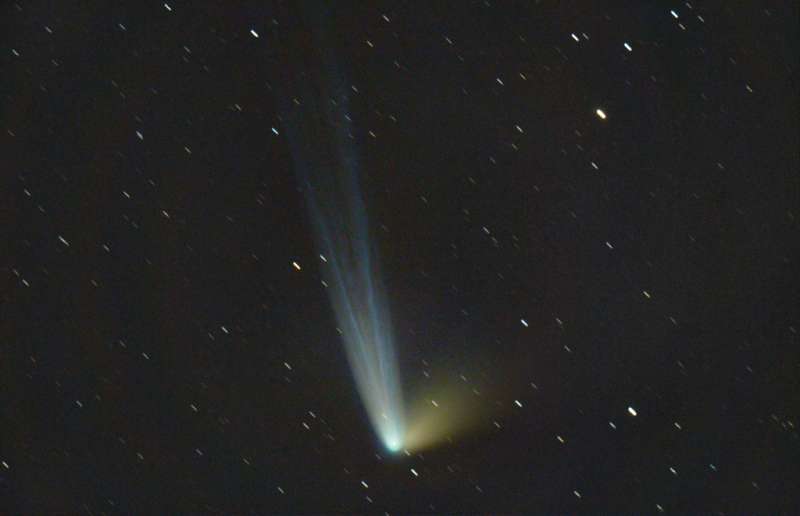
|
Credit & Copyright: Kevin Parker
Explanation:
After
grazing the western horizon on northern summer evenings
Comet PanSTARRS (also known as C/2014 Q1)
climbed higher in southern winter skies.
A
visitor to the inner Solar System discovered in August 2014
by the prolific panSTARRS survey,
the comet was captured here on July 17.
Comet and colorful tails
were imaged from Home Observatory in Mackay, Queensland, Australia.
The field of view spans just over 1 degree.
Sweeping quickly across a the sky
this comet PanSTARRS
was closest to planet Earth about 2 days later.
Still, the faint stars of the constellation Cancer left short trails
in the telescopic image aligned to track the comet's rapid motion.
PanSTARRS' bluish ion tails stream away from the Sun, buffetted
by the solar wind.
Driven by
the pressure of sunlight, its more diffuse yellowish dust
tail is pushed outward and lags behind the comet's orbit.
A good
target for binoculars from southern latitudes,
in the next few days the comet will sweep through skies near
Venus, Jupiter, and bright star Regulus.
|
January February March April May June July August September October November December |
| ||||||||||||||||||||||||||||||||||||||||||||||||
NASA Web Site Statements, Warnings, and Disclaimers
NASA Official: Jay Norris. Specific rights apply.
A service of: LHEA at NASA / GSFC
& Michigan Tech. U.
Based on Astronomy Picture
Of the Day
Publications with keywords: comet
Publications with words: comet
See also:
- APOD: 2025 December 1 Á 3I ATLAS: Tails of an Interstellar Comet
- APOD: 2025 November 25 Á Comet Lemmon and the Milky Way
- 3I/ATLAS: A View from Planet Earth
- APOD: 2025 November 17 Á Comet Lemmons Wandering Tail
- APOD: 2025 September 30 Á Comet Lemmon Brightens
- APOD: 2025 September 29 Á Two Camera Comets in One Sky
- APOD: 2025 September 26 Á A SWAN an ATLAS and Mars
